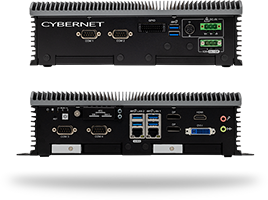Spokane Transit Authority Benefits From Greater Reliability

-
SPOKANE TRANSIT AUTHORITY
- Industry: Industrial
- HQ: Spokane, WA
 Challenge
Challenge
The STA had been experiencing significant reliability issues with its infotainment displays across its expanding bus route network. Despite using computers that had been marketed as “rugged,” their units were constantly breaking down for two main reasons:
- Constant vibrations from traveling over the road led to component failure and hard drive corruption.
- Inconsistent voltage during engine start/stop led to power cycling and damage to computer components.
These issues led to constant expensive maintenance calls, with technicians forced to perform time-consuming troubleshooting that strained the STA’s maintenance budget. Even more frustrating was the fact that these inspections often resulted in a “no fault found” outcome, meaning that no repair or fix was required. The lack of a reliable infotainment system also undermined the passenger experience at a time when the STA’s leadership wished to attract new riders.
 Solution
Solution
During the initial consultation period, Cybernet’s technical team identified the root causes of the reliability issues. First, the standard components of the STA’s computers were not designed for the constant vibration that came with operating on a bus. Second, their current computers were not adequately protected from the voltage fluctuations that occurred during the engine’s start-up and shutdown sequences.
To address these issues, Cybernet offered the iPC R10 rugged mini PC. The iPC R10 possessed several distinct advantages compared to other devices:
- A truly rugged, transportation-ready design that could withstand the constant vibrations of travel, which included solid-state drives for data storage, which were far less susceptible to vibration-induced damage than hard drives.
- An advanced ignition control system that could manage the unstable power conditions during the vehicle’s startup and shutdown sequences, regulating voltage and preventing data corruption.
- Industrial-grade components that could withstand harsh working conditions and extreme temperatures, offering longer lifecycles for sustained fleet deployment.
 Results
Results
After replacing their faulty units with the iPC R10, the STA saw immediate improvements. The “fault not found” issues disappeared virtually overnight, resulting in a significant decrease in technician dispatches and troubleshooting time. This allowed technicians to focus on a proactive approach to maintenance rather than a reactive one, ensuring that problems never arose elsewhere, rather than addressing issues that had already occurred.
The transit fleet enjoyed consistent infotainment operations and could plan for expanded routes without worrying about equipment breakdown. The Transit Authority’s leadership was thrilled that their technology now met their promotional expectations and that their infotainment systems supported, rather than hindered, their efforts to attract new riders. With a proven platform, the STA could continue to expand its express routes, knowing that its onboard computers could support this expansion.
